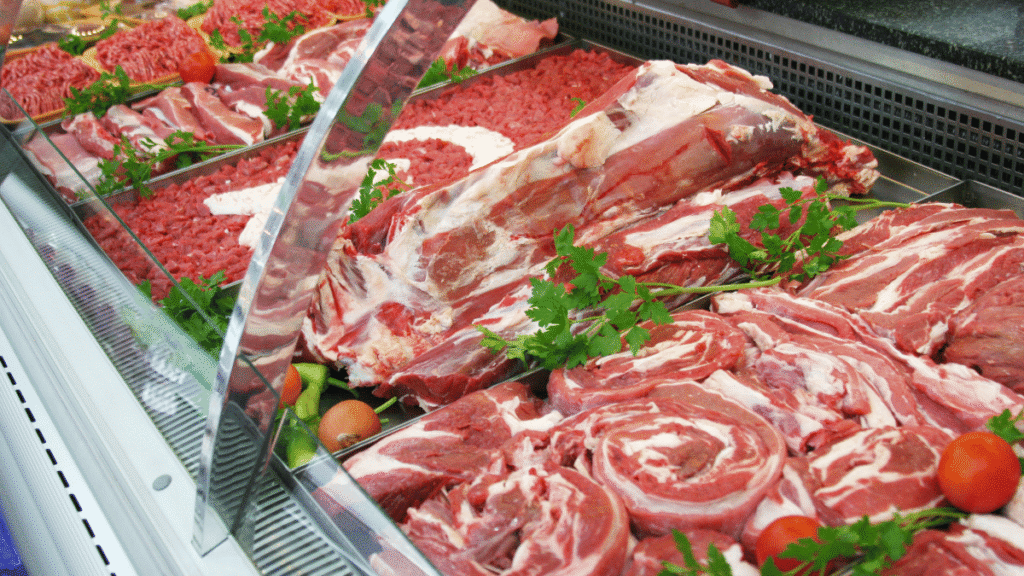
Meat consumption in ArgentinaIt’s more than just a statistic; it’s a snapshot of a country’s culture, economy, and identity. For decades, the Argentine table has been synonymous with barbecue, Milanese, and empanadas, with beef as the undisputed star. However, in recent years, a quiet but significant change has begun to take shape, challenging deep-rooted customs and opening a new chapter in the history of the agri-food sector.
This article aims to unravel the complexities behind meat consumption in the country, analyzing recent trends, the factors driving change, and the opportunities that lie ahead for producers, distributors, and consumers. Through an in-depth analysis based on official data and a strategic vision, we will address how the market is adapting, diversifying, and ultimately redefining its relationship with one of the most emblematic foods in the local diet.
For years, the beef The Argentine plate dominated. Average per capita consumption was one of the highest in the world, consolidating Argentina’s status as the “Land of Meat.” However, economic dynamics, generational changes, and growing concerns about health and the environment have driven notable diversification. The news of an increase in average consumption, such as the 4.6% moving average for June, according to government data, demonstrates a recovery in a volatile market context. However, what is interesting is not just the growth, but the composition of that growth.
The Argentine consumer, traditionally loyal to beef, is exploring new options such as pork and chicken. They have gained considerable ground, not only due to their more affordable price in many cases, but also due to the culinary versatility they offer. This phenomenon is not a passing fad; it’s a structural transformation that directly impacts the entire value chain, from the field to the shelf.
Cannot analyze meat consumption without considering the economic context. Inflation and price fluctuations are determining variables in purchasing decisions. Consumers often look for alternatives to maintain a certain level of protein intake without compromising their family budget. In this scenario, pork and chicken have emerged as strategic options.
While the traditional barbecue remains a sacred ritual, daily meals have adapted to economic realities.Chicken or pork Milanese stir-fries and other more affordable preparations have become part of the regular menu in many homes. This smart consumption behavior is not only a response to the current situation, but has also fostered greater awareness of the nutritional benefits and variety of preparations offered by these alternative meats.
For companies like Vaca China GroupThis diversification is not a challenge, but an opportunity. A strategic focus on processing, distributing, and marketing a variety of proteins is key to capitalizing on emerging market trends production of pork cuts and high-quality chicken, with health and traceability certifications, has become a fundamental pillar to satisfy the demand of consumers who seek not only price, but also quality and trust.
The meatpacking industry, historically focused on beef, has had to reinvent itself. Investments in processing technology, cold storage logistics, and the development of new products, such as vacuum-packed cuts and ready-to-cook products, are examples of the sector’s adaptation. This is an area where the experience and professionalism of Vaca China Group They stand out by offering comprehensive solutions that range from the refrigerator to the end consumer.
Beyond the economic factor, meat consumption is increasingly influenced by sustainability and ethics. A growing segment of the Argentine population, especially among younger people, is paying attention to the origin of food, animal welfare practices, and the environmental impact of production.
While the option of a vegetarian or vegan lifestyleWhile the demand for meats with certified origins and more environmentally friendly production is still a minority, consumers want to know where the meat they eat comes from and how it was produced. This is both a challenge and an opportunity for the industry to transparently communicate its processes and adopt more sustainable practices.
Recent studies show that, despite the popularity of plant-based diets, most Argentinians have no intention of giving up meat altogether. However, they are willing to reduce their red meat consumption in favor of leaner proteins and, in general, to be more conscious of their choices. This translates into a search for healthy alternatives and options that offer a balance between flavor, nutrition and responsibility.
In such a dynamic market, consumer communication is crucial. Companies in the agri-food sector need to go beyond simply selling products. They must educate, inspire, and build a relationship of trust with their audience marketing digital has become an indispensable tool for this purpose.
Social media, blogs, and video content are ideal platforms for showcasing product quality, sharing innovative recipes, and conveying company values. Cow China Group uses these tools not only to promote its products, but also to position itself as a benchmark for quality and excellence in the meat market. Professionalism is demonstrated by sharing valuable information, such as tips on how to choose the best cut or the differences between different types of meat.
Meat consumption in ArgentinaThe industry is at a turning point. The traditional dominance of beef is being challenged by diversification driven by economic, generational, and socially conscious factors. This change doesn’t represent a decline, but rather an evolution. The industry that adapts, innovates, and listens to its consumers will be the one that thrives.
For companies like Vaca China Group, the future is bright. By offering a range of high-quality products, from traditional beef to chicken and pork, and by adopting a mindset of innovation and sustainability, they can consolidate their market position and meet the changing demands of the Argentine consumer. The challenge lies in maintaining the cultural essence of meat in the country while embracing a more diverse, conscious, and opportunity-filled future.